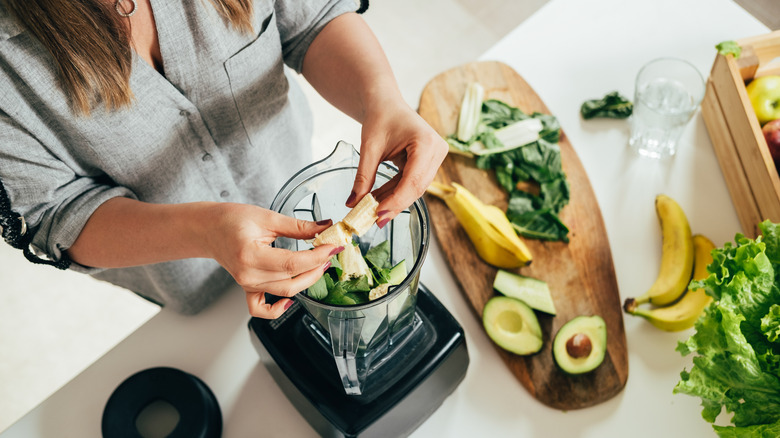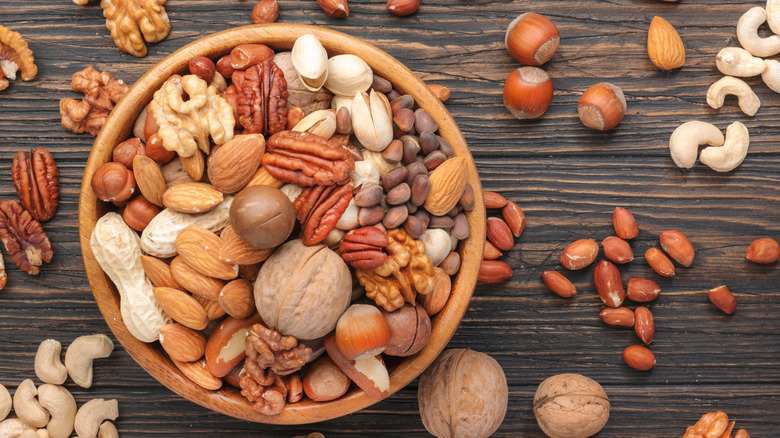The Reason Nuts Shouldn't Go In The Blender
When you're making a smoothie or a milkshake in your blender, do you find yourself getting lost in the sight of all that fruit and ice cream being churned into a smooth pulp? Maybe there's some animal part of our brains that really likes watching things get smashed and whipped together. While a blender is a handy (and dare we say even fun) kitchen tool, it's important to remember that like any kitchen tool, common sense and safety always come first.
In 2016, a Vancouver woman learned the importance of ensuring your appliances, faulty or not, should be left unplugged when not in use, after returning home to find it in flames due to a damaged blender (via CTV News). The popular blender line, NutriBullet, came under fire in 2018, over reports of blenders breaking, malfunctioning, and in some cases even exploding made headlines (via CBS News).
As an appliance that can pulverize most foods into a slurry, it's important to treat blenders with proper care — that includes what's put inside. One such ingredient, nuts, may have messy consequences if placed inside.
Nuts can damage blender blades
It's easy to see why someone may put a handful of nuts into a blender. They're small, they're reasonably brittle, and if the blender can handle a bunch of fruit, chopping a few nuts into tiny pieces should be a piece of cake, right? Nuts are just some of the foods you should avoid putting in a blender.
As Reader's Digest tells us, the idea of using a blender to chop nuts into bite-sized pieces is best left to a grinder. The relative toughness of nuts and beans, compared to something soft and squishy like berries and bananas, means that the blades will either be damaged or blunted as they attempted to chop through the nuts, according to Reader's Digest. If the blender somehow does manage to chop through the nuts, you'll wind up with a sticky, clumped mess instead of a smooth peanut butter-like paste.
Some sources, such as KitchenSeer, do say that you can put nuts in a blender, albeit, with a bit of prep work beforehand. You should first soak the nuts in water to soften them, use a tamper to help guide the softened nuts to the blades, and perhaps most importantly, layer your ingredients to ensure softer ingredients are at the bottom and firmer ingredients are at the top. Compared to throwing nuts straight into the blender, this is a bit more time-consuming, but a much safer process that won't risk damaging your machine.

